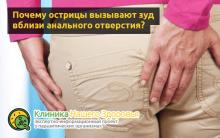Modern political science can give a complete description of any form of state (the structure of the political organization of society) based on the form of government, the form of the state-territorial structure and the type of political regime.
Forms of government
The form of government is a way of organizing the supreme state power. There are two forms of government - monarchy and republic. Monarchy, in turn, can be of such types as:
- absolute (all the fullness of executive, legislative and judicial power is concentrated in the hands of the monarch);
- constitutional or parliamentary (the power of the monarch is limited by the constitution, the real executive and legislative power is in the hands of the parliament elected or formed by the people);
- dualistic (power is divided equally between the monarch and parliament);
- theocratic (power is in the hands of the spiritual leader who heads this or that denomination).
The republican form of government exists in such forms as
- presidential (power is concentrated in the hands of the elected president);
- parliamentary (the country is led by parliament or the prime minister; the president performs only representative functions);
- mixed (power is divided between parliament and the president).
Form of state-territorial structure
The forms of the state-territorial structure are a way of interconnection and interaction of individual parts of the state, enshrined in the constitution. There are forms like
- federation (an alliance of relatively independent subjects, subordinate in all important matters to the political center);
- unitary state (a single and indivisible state, consisting only of administrative units);
- confederation (a temporary union of states completely independent from each other).
Political regimes
The political regime is a set of methods and ways of exercising state power. There are such types of political regimes as
TOP 4 articleswho read along with this
- democratic (power is in the hands of the people, civil rights and freedoms are both declared and actually work);
- undemocratic (power is in the hands of the ruling elite, the political minority, civil rights and freedoms are only declared, they do not work in practice).
A non-democratic political regime also has certain subspecies: authoritarian and totalitarian (the difference lies in the level of control of power over society).
Most of the countries of foreign Europe are republics of various types with democratic political regimes. The Republics of Foreign Europe are France, Italy, Switzerland, Germany, Austria.
But, despite this, there are a large number of countries in foreign Europe with a monarchical form of government. How many are there?
Monarchies of Foreign Europe
Which states can be included in the list of "Monarchist countries of foreign Europe"? It can be represented as follows.

Fig. 1 Ruling royal house of Windsor
|
Country |
Form of political organization |
Form of government |
|
Norway |
Kingdom (ruling house - Gluckburg dynasty) |
A constitutional monarchy |
|
Kingdom (ruling house - Bernadotte dynasty) |
A constitutional monarchy |
|
|
Kingdom (ruling house - Glücksburg dynasty) |
A constitutional monarchy |
|
|
Great Britain |
Kingdom (ruling house - Windsor) |
A constitutional monarchy |
|
Kingdom (ruling house - Saxe-Coburg-Gotha dynasty) |
A constitutional monarchy |
|
|
Netherlands |
Kingdom (ruling house - Oran-Nassau) |
A constitutional monarchy |
|
Luxembourg |
Duchy (ruling house - Bourbons of Parma) |
A constitutional monarchy |
|
Liechtenstein |
Principality (ruling house - Savoy dynasty) |
A constitutional monarchy |
|
Kingdom (ruling house - Bourbons) |
Parliamentary monarchy with a bias towards dualism |
|
|
Principality (ruling house - Bourbons) |
A constitutional monarchy |
|
|
Principality (ruling house - Grimaldi) |
A constitutional monarchy |
|
|
papal state |
Elective absolute theocratic monarchy |
The Vatican is not the only state with an elective theocratic absolute monarchy. The second state is Iran, where the spiritual leader, Ayatollah Khomeini, held power for a long time.
Thus, a fairly large number of large European countries are monarchies. Their share is especially great in Northern Europe abroad (if you look at their location on the map). 
Rice. 2 Political map of foreign Europe
Almost all modern dynasties are connected by blood ties. The royal house of Great Britain, the Windsors, are representatives of both the Saxon-Coburg - Goth dynasty and the Glücksburg dynasty. The oldest unbroken dynasty is the princely house of Grimaldi. The throne has been passed down in a straight line from father to son for 700 years.

Fig. 3 Head of the ruling house of Monaco - Prince Albert II Grimaldi
What have we learned?
Most of the monarchical countries of Foreign Europe are constitutional monarchies. This means that all legislative, executive and judicial power is in the hands of Parliament and an elected Prime Minister or Chancellor. The monarch plays a representative role, although he can speak out on key issues of foreign and domestic policy. In some countries, such as the UK, the monarch is a significant figure in the political arena. Elizabeth II, the reigning queen, actively interfered in the activities of many prime ministers: Margaret Thatcher, Tony Blair and others.
Topic quiz
Report Evaluation
Average rating: 4.6. Total ratings received: 85.
Reading historical novels with the constant presence of states ruled by kings, emperors, pharaohs, shahs, sultans, grand dukes and dukes, it seems that this is all of the distant past. Raised for generations on an atheistic, socialist and incomprehensibly what idea now, the citizens of Russia have forgotten that the monarchy is still strong all over the world - power from God. In different states, she is, but still legitimate, respected by the majority of her people. In which countries the monarchy has been preserved, how firmly it holds power in the changed conditions, this article will tell.
Rulers of Europe, Middle East
The undisputed leader of the monarchs of the whole world in terms of authority, length of time on the throne, the power of her country with dominions all over the planet, over which the sun still does not set, is the Queen of Great Britain, the head of the British Commonwealth of Nations, Elizabeth II. She has ruled since 1952.

An interesting fact is that the representative of the ruling dynasty is not only the supreme commander, but also the head of the Anglican Church. Apparently, the monarchs from the Windsors with an iron hand solve not only worldly problems, but also religious matters, leaving nothing without their control.
Despite the authoritarianism of Elizabeth II, the question - in which countries the absolute monarchy - does not apply to her. In Great Britain - a parliamentary monarchy, when in this case the power of the queen is limited by the constitution, she performs mainly representative functions. That's just something hard to believe in it.
The parliamentary type of constitutional monarchy is also in Denmark - since 1972, Queen Magrethe II, Sweden - since 1973, King Carl XVI Gustaf.
Kings also rule:
- Spain - Philip VI (since 2014).
- The Netherlands - Willem-Alexander (since 2013).
- Belgium - Philippe (since 2013).
- Norway - Harald V (since 1991).
Monaco has been ruled by Prince Albert II since 2005. A curious situation in Andorra is that there are two co-rulers here: Prince Joan Enric Vives y Cicilla since 2003 and French President Francois Hollande since 2012.

In general, the vaunted European democracy against the background of the triumph of the monarchical system, which came from the depths of centuries, makes a rather strange impression. Despite the presence of parliaments and other elected institutions of power, the monarchs of many European states are not decorative, but real rulers, respected and loved by their peoples.
Which countries have absolute monarchy? Basically, these are the countries of the Middle East, such as:
- Oman;
- Qatar;
- Saudi Arabia.
Here, the monarchs have truly unlimited power, like the rulers of the past, having the ability to execute and pardon, to lead the country, in accordance only with their own opinion. Perhaps to give a hint of new democratic trends, in some of these countries the people can sometimes express their aspirations through deliberative organizations.
Monarchs of the New World
The form of government in many countries discovered by Europeans and called the New World, long and often earlier than the states of the Old World, was already controlled solely by local rajas, sultans, emirs, as well as kings and emperors.
Which countries still have monarchies today?
- Japan. Emperor Akihito. Ruled since 1989. Wants to resign due to health reasons.
- Malaysia. King Abdul Halim Muadzam Shah.
- Cambodia. Ruled by King Norodom Sihamoni.
- Brunei. Sultan Hassanal Bolkiah.
Those who have visited Thailand know with what respect and love the inhabitants of the country treat their monarch. When there was an attempt to legally limit his power, a political crisis erupted in the country, which almost ended in a civil war. Recently, in October 2016, King Bhumibol Adulyadej, who had ruled Thailand since 1946, passed away, and a year of mourning was declared in the country.
Answers to the question - in which countries the monarchy has been preserved - are often very unexpected, give food for thought. It turns out that half of the world lives under the "yoke" of individual rulers, but not only does not create Marxist circles, printing proclamations calling for the overthrow of tyrants, but sincerely loves its monarchs, members of the ruling dynasties. For example, in the UK, Thailand, and.
Modern European monarchies are perhaps one of the most discussed topics related to Europe. Someone rejoices at the preserved traditions of governance and, accordingly, stands up for the monarchy in the EU, while someone is very dissatisfied and calls the reigning families a props and nothing else. And the latter are right in many respects: the monarchs forgot about their duties.
Alexander Zakatov: Monarch - as a conductor
In society, there are still disputes over the position of the so-called reigning monarchs of Europe. Some argue that the European monarchs of our time do not have any real power, being decorative figures and embodying only a symbol of national traditions and former greatness; others believe that monarchs are sent down from above for good purposes.
Quantity or quality?
There are more than 230 states in the world. Of these, only 41 countries have a monarchical form of government. Today, the monarchy is a very flexible and diverse system, ranging from the tribal form operating in the Arab states to the monarchical version of the democratic countries of Europe. Europe ranks second in the world in terms of the number of monarchical states. There are 12 monarchies here. The monarchy is represented here in a limited form - in countries that are considered leaders in the EU (Great Britain, the Netherlands, Belgium, Luxembourg, etc.), as well as an absolute form of government - in small states: Monaco, Liechtenstein, Vatican City. The quality of life in these countries is different. The influence of monarchs on the government of the country is also different.
Monarchy: good or bad?
Monarchy is not only a form of government, it is a set of certain ideas of state, spiritual and social order. The monarchy is characterized by the principles of unity of command, hereditary power and the primacy of the moral principle. In Orthodoxy, the monarch was perceived as a person sent by God to serve his people. To this we can add that the monarchy is a universal form of organization of the nation, which, in fact, can coexist with most modern socio-economic and socio-political models. But for decades, liberals and socialists have been systematically carrying out the idea that the monarchy is an obsolete and outdated form of government that should be replaced by a republican, more perfect form.
Various arguments are put forward to support this. Firstly, many states of the world have already abandoned the monarchy or retain it out of inertia. Monarchs in such countries are only a "beautiful tradition", playing no significant role in the domestic and foreign policy of their states. Secondly, the proof of the "regressiveness" of the monarchy is the fact that after its fall there were no attempts to return to it. These theories have many adherents. But it cannot be unequivocally said that the monarchy is evil, since many European monarchies occupy leading positions in the world.
The moral component of modern monarchs
Some experts, discussing the benefits and harms of the monarchy, cite England, Spain, Sweden and Norway as an example. These countries have retained a normal monarchical regime, and the monarchs in them are not only symbolic figures, really ruling the state. Supporters of the fact that monarchs have real authority in these countries refer to the basic laws of the states, according to which monarchs have serious power powers. So, for example, the Queen of Great Britain appoints the government, has the right to dissolve parliament, not a single bill that has been adopted by parliament is considered valid without the signature of the monarch. Their opponents say in response that all these provisions are nothing more than a formality, since power is actually in the hands of the party oligarchy. Monarchs, on the other hand, should bring high morality to the people and be authorities in society.
Do the modern monarchs of Western Europe meet the requirements of a moral ideal? In most cases, this question (with the exception of Luxembourg and Liechtenstein) should be answered confidently - no. Moreover, monarchies not only do not meet the moral values in the minds of the people, but even indulge in the propaganda of lack of spirituality. In these monarchical states, sodomy and debauchery flourishes, the nation is degenerating, the authority of the Church has reached the lowest level.
So, for example, in the UK for 35 years gay pride parades have been held on the streets of London, often with the support of the government. Three years ago, about half a million people took part in the London gay pride parade, and about 800 thousand Londoners followed the progress of the action. Already traditionally organized columns of employees of various British ministries, rescue services and trade unions participate in the parade.
Such official support is the best indicator of British attitudes towards homosexuals. Gay politicians themselves today openly declare their non-traditional orientation: Ben Bradshaw, Minister of Culture, Sports and the Media; Chris Bryant, Deputy Foreign Secretary; Nick Herbert, "shadow minister" for the environment. The Anglican Church is not in the best position either. Its halls are actively rented, not only for wedding events, but also for language courses, various sports or clubs of interest.
Another distinctive feature is that no monarchy in Europe is absolute which once again underlines the high level of European democracy. However, the Vatican is legally an absolute monarchy. This is the most microscopic (territory - 0.44 sq. km, population - about 1000 people) state of Western Europe, with a huge history and an interesting form of government. The head of state is the Pope, who is elected to his office by the College of Cardinals for life. The pope has all the legislative, executive and judicial powers. Under him (under the Pope) there is a legislative body (the same College of Cardinals). The most interesting thing is that the Vatican practically has its own Constitution, or rather, the Constitutional Acts of the State-City of the Vatican dated June 7, 1929.
Based on the above facts, it turns out that, by virtue of the presence of all three levers of power in the Pope, the Vatican monarchy is absolute; the fact of the state church makes it theocratic, and the presence of constitutional acts semi-constitutional. That is, in the Vatican, there is an absolute theocratic semi-constitutional monarchy.
But, listing these facts, it should be borne in mind that the existence of statehood in a country like the Vatican is just a tribute to the medieval traditions of Europe.
In our time, there is a problem of "rich North - poor South", the same trend can be seen to one degree or another in monarchies, that is the further south the monarchy is, the more absolute it is. So from the northern monarchies, we can cite the example of Sweden. This is a northern European monarchy, which is even more limited than the English monarchy. The monarch in Sweden, according to the Constitution of 1974, has practically no powers, except for ceremonial ones: to open a meeting of parliament, to congratulate the population of the country on the New Year, etc. Those. the monarch in Sweden is just a symbol of the state on a par with the flag and anthem and no more, and according to European principles, it is a tribute to traditions. Those. Swedish monarchy can be called super-parliamentary.
Of the southern monarchies, Brunei can be cited as an example. An Asian state with the beginnings of parliamentarism and constitutionality. In 1984, when Brunei gained its independence, power passed into the hands of the Sultan. There are no clearly defined legislative and executive authorities in this country. Only the Constitutional Councils, which are a kind of advisory body under the monarch, can act as legislative bodies.
Power in Brunei is concentrated in the hands of one autocratic monarch. Although at the moment Brunei resembles Russia at the beginning of the 20th century, because. the growth of the Brunei liberation movement is now visible.
That is, the Brunei monarchy is inherently absolute with little rudiments of parliamentarism and democracy.
monarchy despotism muslim











Donkey what an animal. Donkey animal. Donkey lifestyle and habitat. Donkey health care
Brief information about the scorpion
What do zoologists study? What is zoology? What does the science of zoology study? Differences from plants
Interesting facts about fur seals
Feeding chickens with worms and insect larvae How to determine if chickens have worms